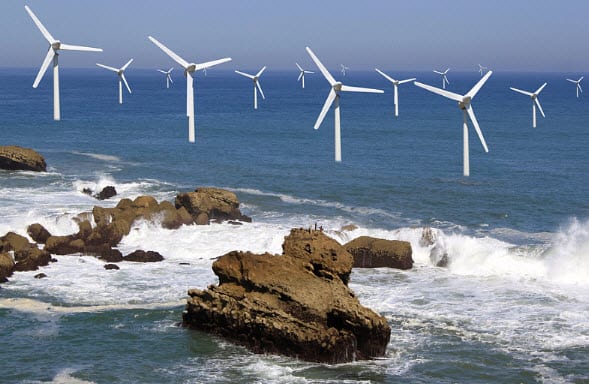Offshore wind energy initiative announced by federal energy
December 23, 2013New leasing initiative launched
 The U.S. Bureau of Ocean Energy Management has announced a new lease auction for offshore wind energy projects. The land for these projects is located some miles off the coast of New England and Virginia. Prospective wind developers have 60 days to provide the agency with their interest in the auction. Depending on interest from developers, new offshore wind projects could begin construction as early as spring 2014.
The U.S. Bureau of Ocean Energy Management has announced a new lease auction for offshore wind energy projects. The land for these projects is located some miles off the coast of New England and Virginia. Prospective wind developers have 60 days to provide the agency with their interest in the auction. Depending on interest from developers, new offshore wind projects could begin construction as early as spring 2014.
Offshore wind gains momentum
Offshore wind energyhas become quite popular in the U.S. in recent years. The country has been pursuing an “all of the above” energy policy, in which wind plays a significant role. The majority of the country’s interest in wind power takes the form on onshore projects. States like Iowa have managed to establish a strong lead in the wind sector due to federal incentives and access large expanses on open land. Onshore projects are often considered to be limited by geography, however, a problem that is not common at sea.
Study highlights prospects of offshore wind development
Offshore wind has a great deal of potential that is not often brought to attention. A study from the National Wildlife Foundation suggests that harnessing even a small amount of this potential could produce some 1,300 gigawatts of electricity, enough to power approximately 14 million homes and create 300,000 new jobs. Furthermore, an estimated $200 billion in new economic activity could be attained by tapping into offshore wind energy.
Developers uneasy over federal indecision
While offshore wind may be an attractive prospect for the federal government, wind developers have not been enthusiastic to participate in the country’s leasing offers. Many wind developers have opted to focus their efforts on other countries that are offering better incentives. The United Kingdom, for instance, has become a popular market for wind energy development. Moreover, federal policies in the U.S. are currently in a state of flux, making wind developers somewhat uneasy, especially as incentives may be allowed to expire, thereby removing the financial aid that wind projects receive.

 With over 15 years of reporting hydrogen news, we are your premier source for the latest updates and insights in hydrogen and renewable energy.
With over 15 years of reporting hydrogen news, we are your premier source for the latest updates and insights in hydrogen and renewable energy.